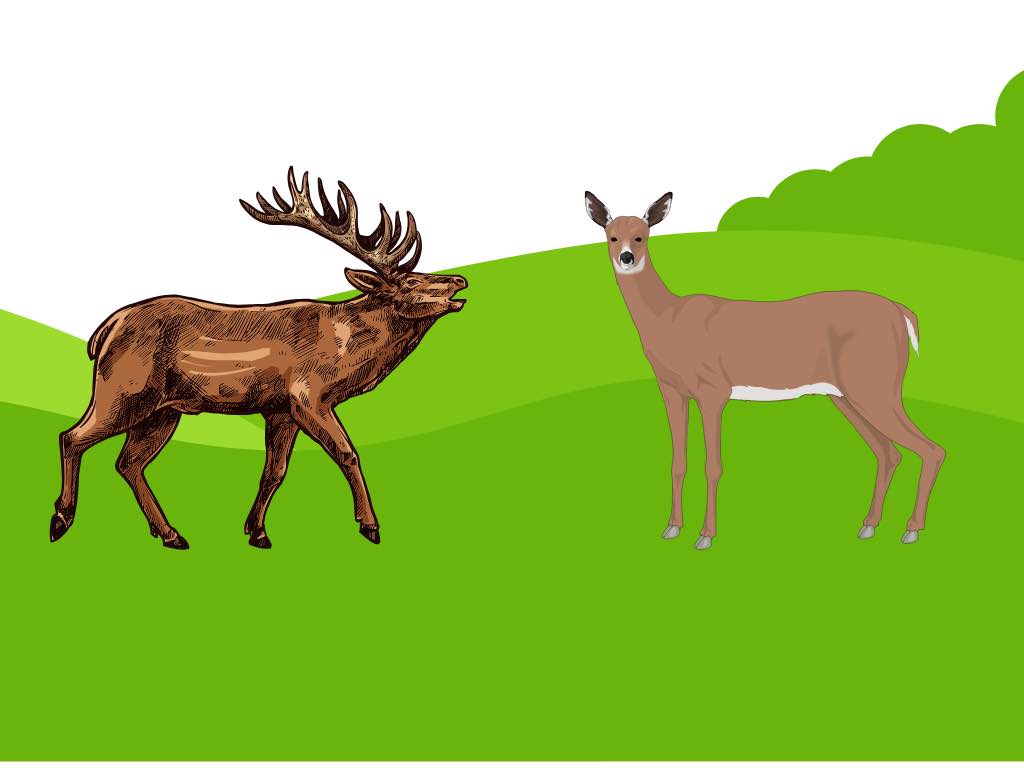
Elk vs. Deer: The Ultimate Guide to Wild Game Meat
|
|
Time to read 5 min
Welcome to One Stop Halal!
Written by: Najma A.
|
|
Time to read 5 min
Regarding wild game meats, deer and elk are two popular choices, each with unique flavors, textures, and nutritional benefits. Though both are members of the Cervidae family and often share similar habitats, elk and deer meat have distinct differences that can make one preferable depending on personal tastes and cooking preferences. This article will explore everything you need to know about elk vs deer meat, including flavor profiles, nutritional values, cooking techniques, and sustainability considerations.
Elk is a larger member of the deer family primarily found in North America and parts of Asia. Its meat is often described as having a mild, slightly sweet flavor compared to other wild game meats. Due to its larger size, elk cuts are generally lean but tender, especially when harvested from younger animals. Elk is a popular choice for those who prefer a less "gamey" taste and enjoy meats with a texture similar to beef.
The term "venison" typically refers to deer meat, a staple in many hunting communities worldwide. Venison has a more pronounced gamey flavor than elk, which can vary depending on the deer's diet and age. Deer meat is also very lean, which makes it a healthy alternative to red meat. However, its flavor can be more robust and sometimes more challenging for those unaccustomed to wild game meats.
Elk meat is often compared to beef but with a cleaner, richer taste and a hint of sweetness. It is less gamey than venison, which makes it a great introduction to wild game meats for newcomers. The mildness of elk meat makes it versatile and suitable for various culinary applications, including steaks, ground meat, sausages, and roasts.
Deer meat has a more robust, earthy flavor, often described as gamey. The taste can vary depending on the type of deer, what they eat, and how the meat is prepared. For example, whitetail deer, commonly found in North America, often have a more robust flavor, whereas fallow deer, a European species, tend to have milder, tenderer meat. Some people enjoy the distinct taste of venison, while others find it too strong and prefer it in stews or dishes where its flavor can blend with other ingredients.
Elk meat is versatile and can be prepared in many ways, similar to beef. It can be grilled, roasted, stewed, or even ground for burgers and sausages. Elk steaks are best when cooked medium-rare to retain tenderness and avoid dryness. Marinades can enhance the natural flavors, and a simple seasoning of salt, pepper, and herbs is often all you need for a delicious elk steak.
Due to its lean nature and gamey flavor, venison is often best suited for slow-cooking methods that help tenderize the meat, such as braising or stewing. However, venison steaks can also be delicious when grilled or pan-seared, as long as they’re not overcooked. The intense flavor of venison pairs well with ingredients like garlic, rosemary and juniper berries.
Elk are often managed through hunting regulations that help maintain balanced populations. Additionally, elk farming is on the rise, providing a more sustainable source of elk meat without significantly impacting wild populations. Farmed elk are typically raised in open pastures; their meat is free from antibiotics and hormones.
Deer populations are carefully managed through hunting permits and seasons to prevent overpopulation, which can lead to environmental degradation. Deer hunting also contributes to local economies and helps control populations in areas where they might otherwise cause agricultural damage.
In both cases, opting for wild game meat over conventionally farmed meats can reduce environmental impact, as these animals are typically harvested or raised with minimal artificial inputs and have a lower carbon footprint than industrial livestock.
Elk meat vs Deer meat is a specialty product and can be more expensive than conventional beef. However, they are often available at specialty butcher shops, farmers’ markets, and online retailers specializing in wild game meats.
Elk meat tends to be slightly more expensive than venison, mainly due to the costs associated with farming and limited availability. Prices can range from $15 to $30 per pound, depending on the cut and where you buy it. Farm-raised elk is more widely available than wild-harvested elk, particularly in the United States and Canada.
Venison is often more readily available, especially in areas with an active hunting community. Prices vary widely, from $10 to $25 per pound, depending on the cut and sourcing. Some local hunters also sell venison directly, which can be more affordable.
Choosing elk vs deer meat ultimately comes down to personal preference and what you’re looking for in terms of flavor, nutrition, and availability. Here are some considerations to help you decide:
Welcome to the Home of Elk Meat. We carry various elk meat cuts that are hard to find elsewhere. We deliver to your doorstep anywhere in the United States within 1-2 business days.
Deer vs Elk meats have unique attributes that make them well worth trying. Elk offers a tender, mildly flavored meat that is easy to prepare and enjoy, even for those new to game meats. Venison brings a bold, rich taste that appeals to those who relish the classic wild flavors of the hunt. Whether you’re grilling, stewing, or experimenting with new recipes, both types of meat provide a healthy, sustainable, and delicious alternative to conventional meats. By understanding the difference between elk and deer and the similarities between deer vs. elk meat, you can make an informed choice that suits your culinary preferences and dietary goals. So, the next time you’re at a specialty butcher. Consider trying one of these unique meats – your taste buds and health will thank you!

© 2025 One Stop Halal, Inc.